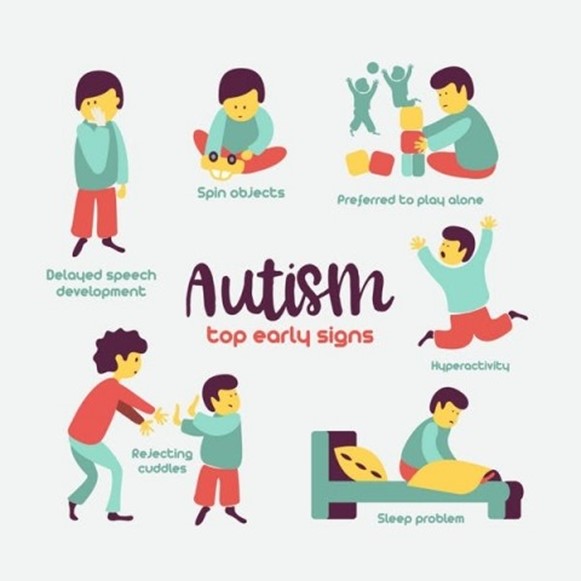The nurse is observing a group of 2- and 3-year-olds in a playgroup.
Which behavior noted in one of the children indicates to the nurse that the child may have autism spectrum disorder (ASD)?
After another child takes a toy, the child cries and stomps his feet.
A child playing in the kitchen area pretends to pour a glass of milk and repeats this over and over.
While the other children are eating a snack, the child walks around the room feeling the walls and ignores the caregiver who offers him a snack.
A child flips the light switch off and on until the caregiver asks her to stop and join the other children in play.
The Correct Answer is C
A child with autism spectrum disorder may have problems with social communication and interaction, including ignoring a caregiver who offers them a snack.
Choice A is incorrect because crying and stomping feet after another child takes a toy is normal behavior for a 2- or 3-year-old child.
Choice B is incorrect because repeating an action over and over is not necessarily indicative of autism spectrum disorder.
Choice D is incorrect because flipping a light switch off and on until asked to stop and join other children in playing is not necessarily indicative of autism spectrum disorder.

Nursing Test Bank
Naxlex Comprehensive Predictor Exams
Related Questions
Correct Answer is ["A","B","D","E"]
Explanation
E. The nurse should ensure the scale is balanced prior to use [A], place a disposable covering on the scale [B], weigh the infant in a diaper [D], and measure the infant from the crown of the head to the heels of the feet [E].
Choice C is incorrect because a stadiometer is used to measure standing height and is not appropriate for measuring the length of an infant who cannot stand.
Correct Answer is B
Explanation
Radiographs are vital to the diagnosis of Legg-Calve-Perthes disease.
Initial X-rays might look normal because it can take one to two months after symptoms begin for the changes associated with Legg-Calve-Perthes disease to become evident on X-rays.
The doctor will likely recommend several X-rays over time, to track the progression of the disease.

Bone biopsy is not a diagnostic procedure for Legg-Calve-Perthes disease.
MRI can visualize bone damage caused by Legg-Calve-Perthes disease more clearly than X-rays can but are not always necessary.
Genetic testing is not a diagnostic procedure for Legg-Calve-Perthes disease.
Whether you are a student looking to ace your exams or a practicing nurse seeking to enhance your expertise , our nursing education contents will empower you with the confidence and competence to make a difference in the lives of patients and become a respected leader in the healthcare field.
Visit Naxlex, invest in your future and unlock endless possibilities with our unparalleled nursing education contents today
Report Wrong Answer on the Current Question
Do you disagree with the answer? If yes, what is your expected answer? Explain.
Kindly be descriptive with the issue you are facing.
